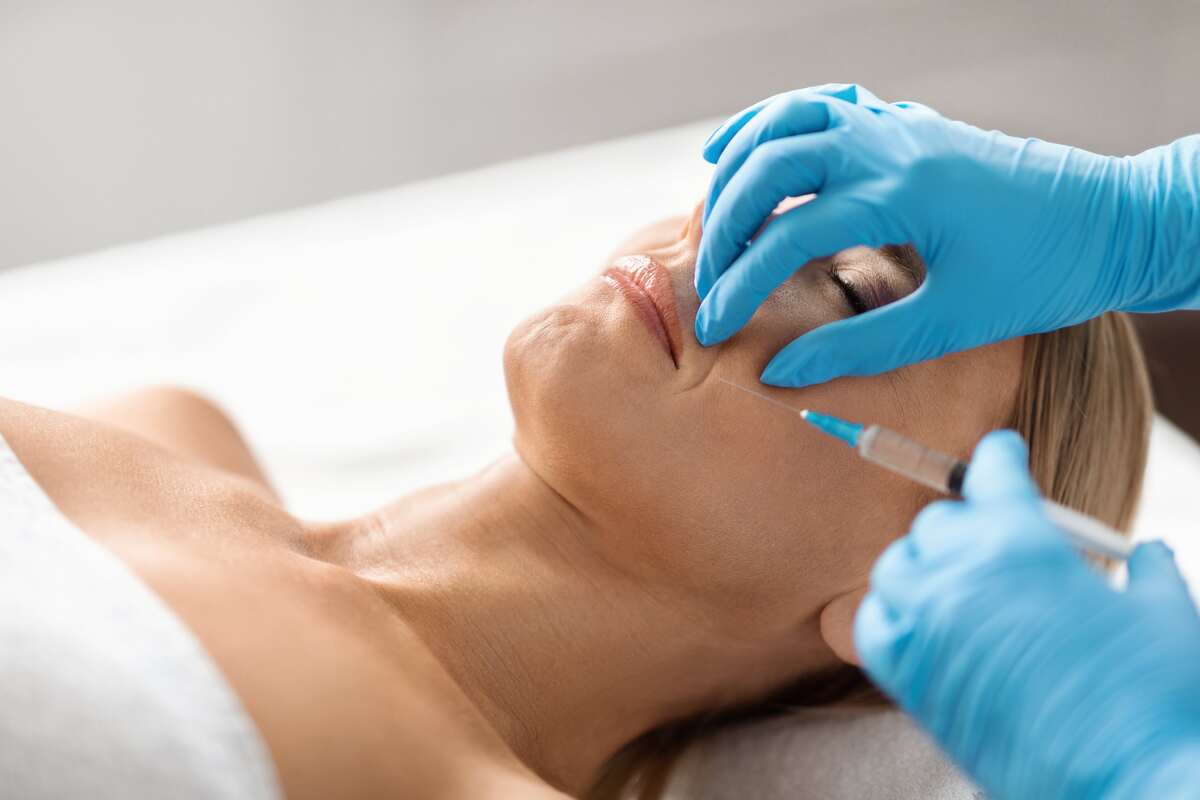Wrinkles and fine lines are familiar indications of aging that many seek to minimize or delay. As the skin ages, it forfeits elasticity and moisture, leading to these visible changes. While numerous treatments promise to address these concerns, one method gaining attention is using neuromodulator injections. Traditionally used to smooth existing wrinkles, there is growing interest in their potential to prevent these signs of aging before they fully develop.
What are Neuromodulators?
Neuromodulators are a class of injectable neurotoxins primarily known for their use in cosmetic dermatology. The most well-known neuromodulator is Botulinum toxin, commonly referred to by brand names like Botox, Dysport, or Xeomin.
Neuromodulators work by temporarily relaxing the muscles beneath the skin. When injected into specific facial muscles, they block the nerve signals that cause muscle contractions. This relaxation reduces the appearance of dynamic wrinkles, which form due to repeated facial expressions like frowning, smiling, or squinting.
In cosmetic applications, neuromodulators are used in small, controlled doses. These doses are sufficient to reduce muscle activity without affecting overall facial expressions significantly. This selective relaxation helps in smoothing out existing wrinkles and can also prevent the formation of new wrinkles.
Neuromodulators do not directly affect the skin’s surface or the aging process at the cellular level. Instead, their primary action is on the muscles underneath the skin. By reducing the intensity and frequency of muscle contractions, neuromodulators can delay the onset of dynamic wrinkles.
Neuromodulators as a Preventive Tool
The concept of using neuromodulators preventively is grounded in the understanding of how dynamic wrinkles form. These are wrinkles caused by repetitive muscle movements, such as frowning or squinting. The action that leads to these wrinkles can be minimized by injecting neuromodulators into specific facial muscles. In theory, this could delay the onset of wrinkles in younger individuals who have yet to develop significant signs of aging.
There are several key points to consider in the use of neuromodulators as a preventive tool:
- Early Intervention: Starting neuromodulator treatments before deep wrinkles have formed could maintain a youthful appearance for longer. This approach is often termed “rejuvenation,” a proactive strategy to delay the signs of aging.
- Frequency and Dosage: Preventive treatments may involve lower doses or less frequent injections than treatments for existing wrinkles. The goal is to gently relax the muscles to reduce the formation of wrinkles without overcorrecting or causing an unnatural appearance.
- Clinical Evidence: There is ongoing research into the long-term effects of using neuromodulators preventively. While many dermatologists support the approach based on their clinical experience and understanding of facial anatomy, more extensive studies are needed to quantify the benefits and optimal strategies for prevention.
- Patient Selection: Preventive neuromodulator treatments may not be suitable for everyone. Age, skin type, lifestyle, and risk of developing wrinkles should be considered. A tailored approach is necessary, and a thorough consultation with a qualified professional is essential.
- Expectations and Limitations: Patients need to have realistic expectations. While neuromodulators can effectively delay the appearance of dynamic wrinkles, they do not stop the natural aging process. They are ineffective against wrinkles caused by sun damage or gravity.
- Safety and Side Effects: Like any medical procedure, there are potential risks and side effects associated with neuromodulator injections, even at a preventive level. These can include bruising, swelling, and, in rare cases, more severe complications.
Neuromodulator Injection Procedure
Here’s a step-by-step breakdown of the neuromodulator injection procedure. It’s important to note that a qualified healthcare professional should only perform this procedure in a clinical setting.
- Initial Consultation
- The patient meets with the healthcare provider to discuss concerns, desired outcomes, and medical history.
- The provider assesses the patient’s skin, facial structure, and muscle movement to determine the appropriate treatment plan.
- Pre-Treatment Evaluation
- The provider may take photographs of the treatment area for medical records.
- Instructions are given regarding what to do and what to avoid before the procedure (e.g., avoiding certain medications or supplements that could increase bruising).
- Preparation of the Treatment Area
- The treatment area is cleaned with an antiseptic to reduce the risk of infection.
- A topical numbing cream may be applied to minimize discomfort, though this is often unnecessary due to the minimal pain involved in the procedure.
- Marking the Injection Sites
- The provider may keep the areas to be injected with a temporary marker. It is done while the patient makes certain facial expressions to identify the muscles responsible for wrinkle formation accurately.
- Preparing the Neuromodulator
- The neuromodulator is designed in a syringe. The dosage depends on the patient’s needs, treatment area, and muscle strength.
- Injection Process
- The provider injects small amounts of the neuromodulator into the marked locations using a fine needle. Multiple injections may be made depending on the size of the treatment area.
- The procedure is relatively quick, typically taking only a few minutes.
- Post-Injection Care
- After the injections, the provider may give the patient instructions on post-treatment care. It may include not rubbing the treated area for a certain period to prevent spreading the neuromodulator to unintended muscles.
- The patient is advised to remain upright for a few hours after the procedure and may be asked to avoid strenuous activities for a day.
- Observation
- Some providers may observe the patient for a short period immediately after the process to ensure no immediate adverse reactions.
- Follow-Up
- The effects of the neuromodulator usually become noticeable within a few days, with full results visible in about one to two weeks.
- A follow-up appointment may be scheduled to assess the effects and determine if additional injections are needed.
Takeaway
Are you ready to advance your career in the dynamic field of aesthetic medicine? Join us at Neos Aesthetic Academy, where cutting-edge techniques meet expert training. Whether you’re a seasoned practitioner looking to refine your skills or a newcomer eager to enter the world of aesthetic treatments, our comprehensive courses are designed to empower your journey.
Dive into a learning experience that blends practical knowledge with hands-on training guided by industry leaders. From mastering neuromodulator injections to exploring the latest in skin rejuvenation, Neos Aesthetic Academy is your gateway to becoming a top-tier aesthetic professional. Enroll with us today!

